Why you can trust Tom's Hardware
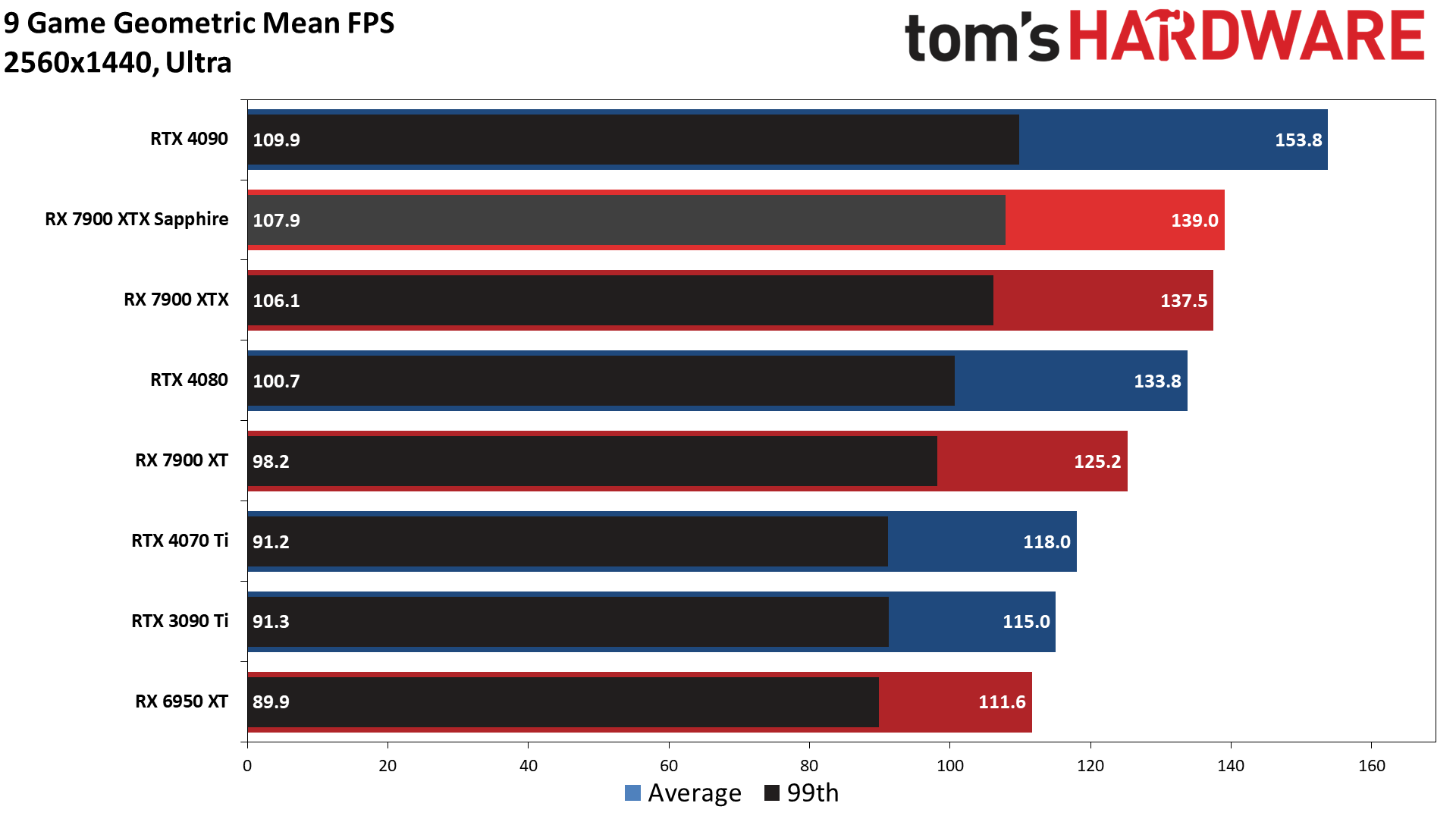
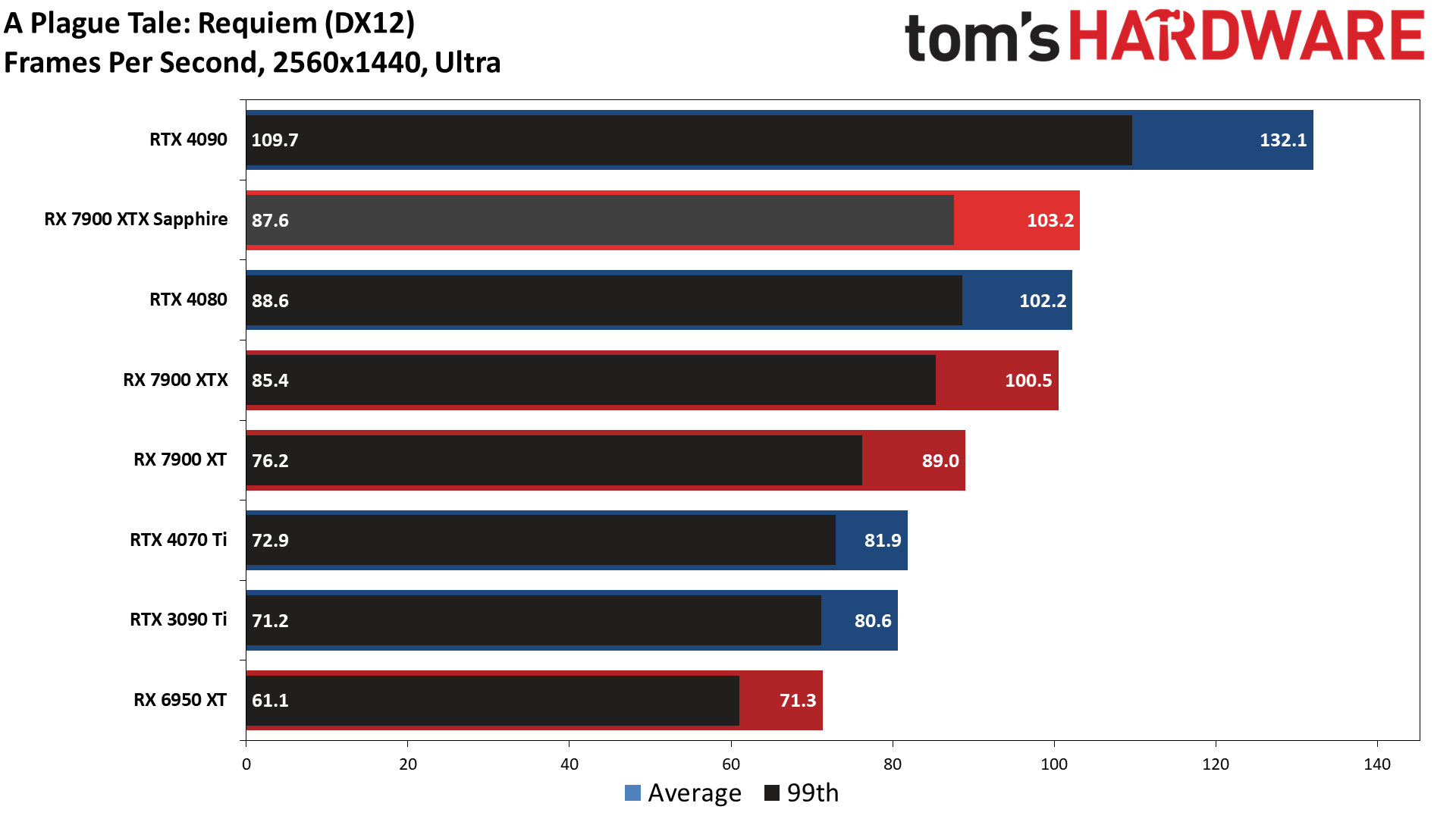
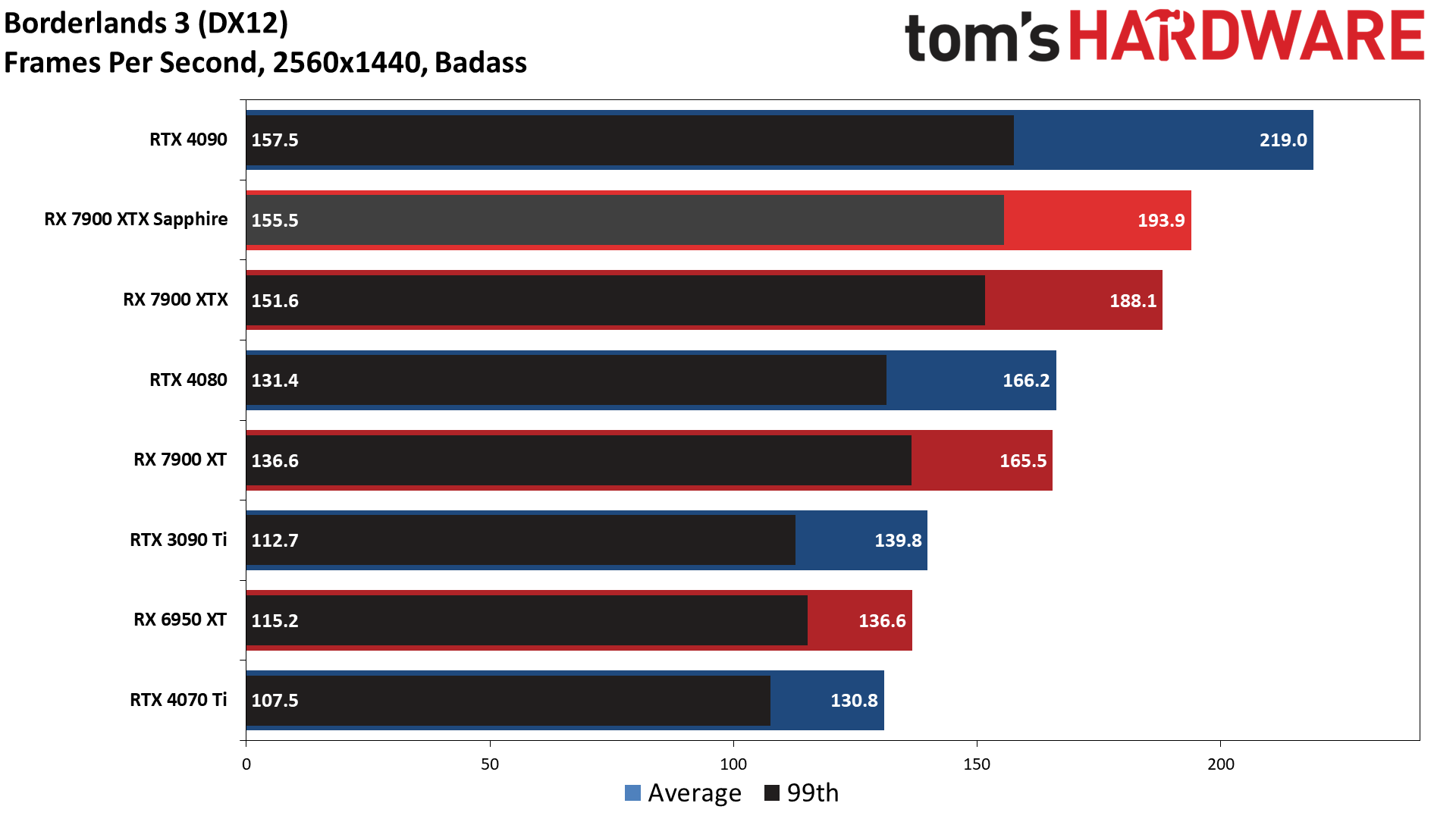
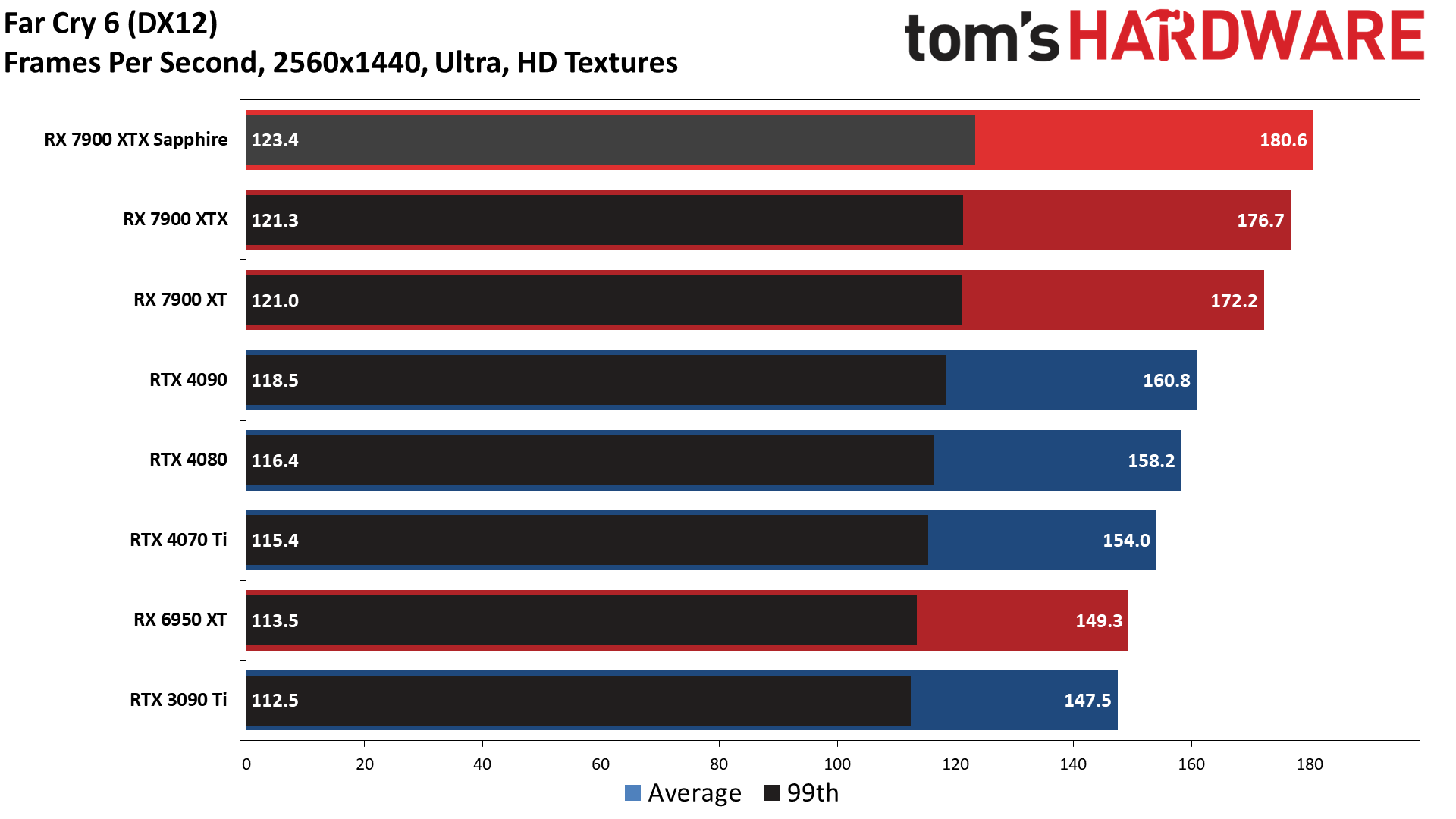
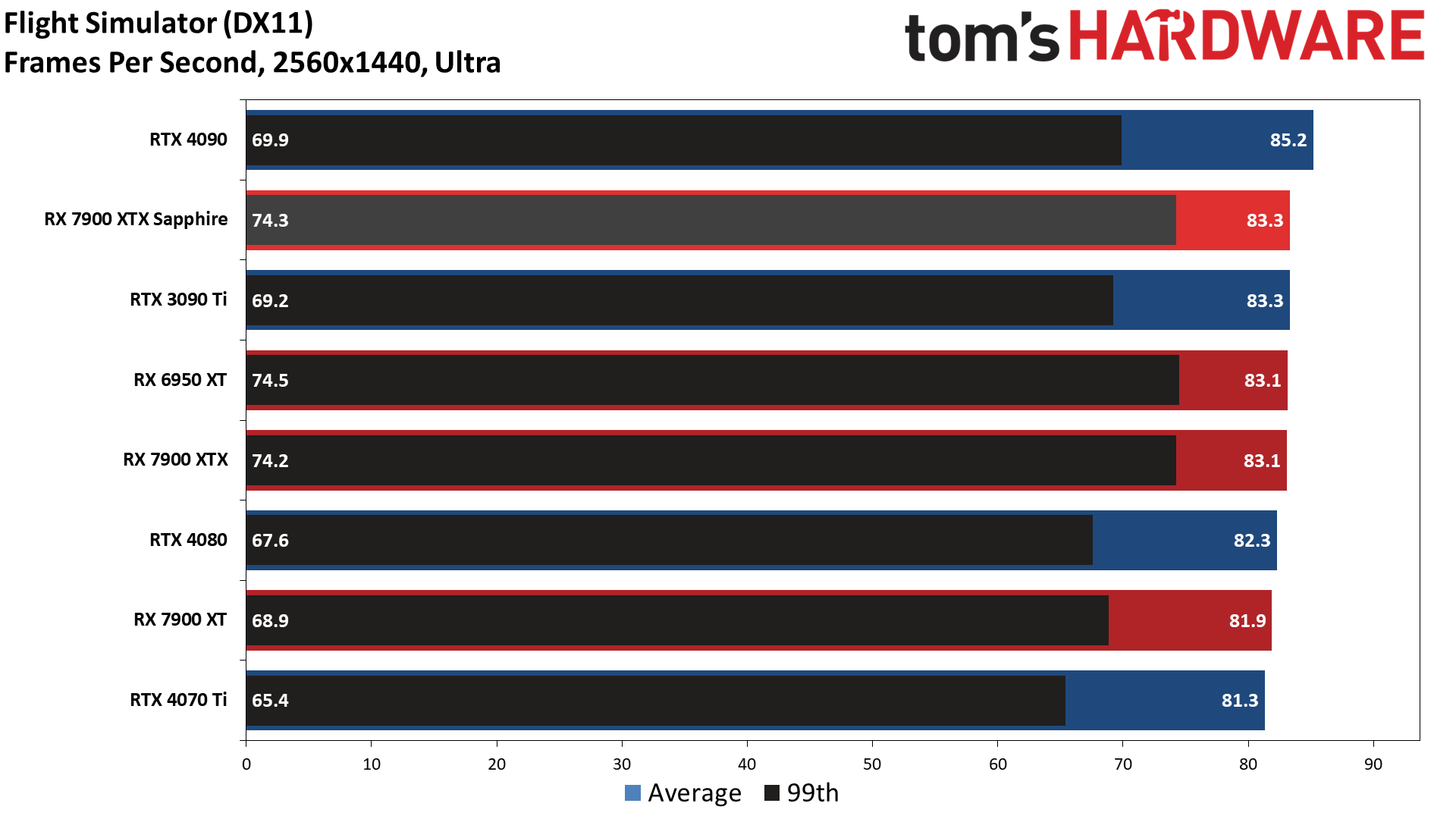
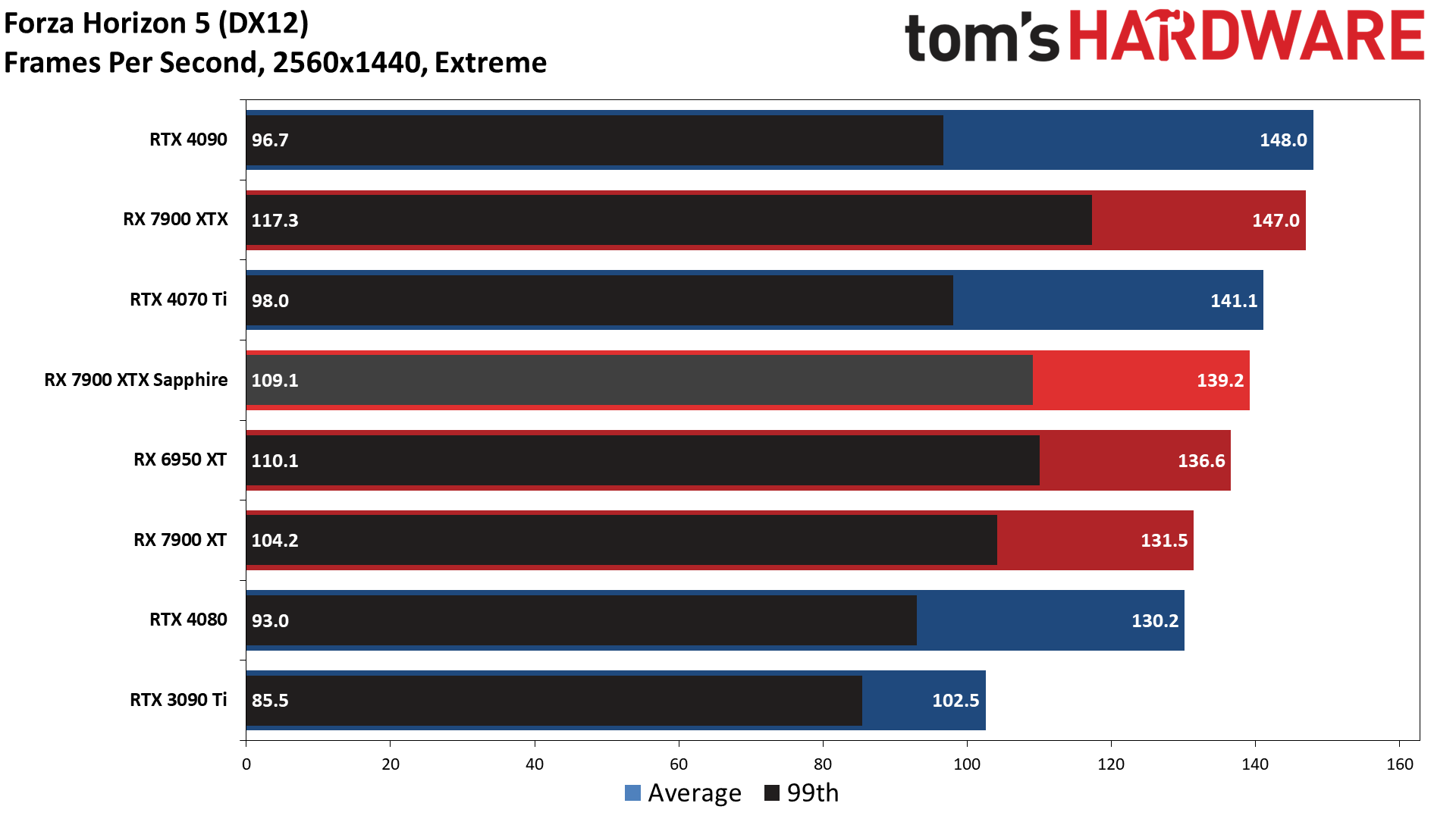
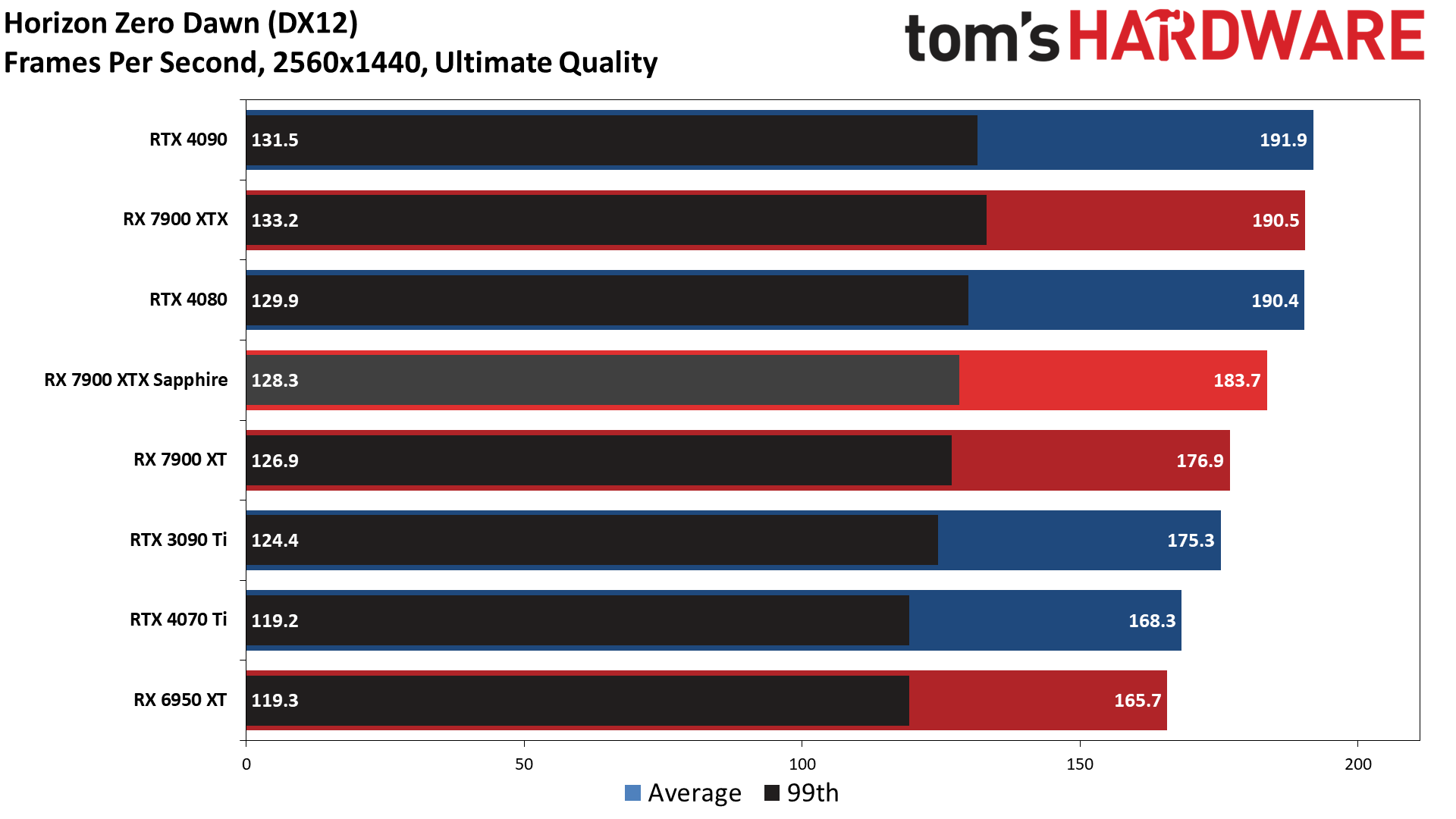
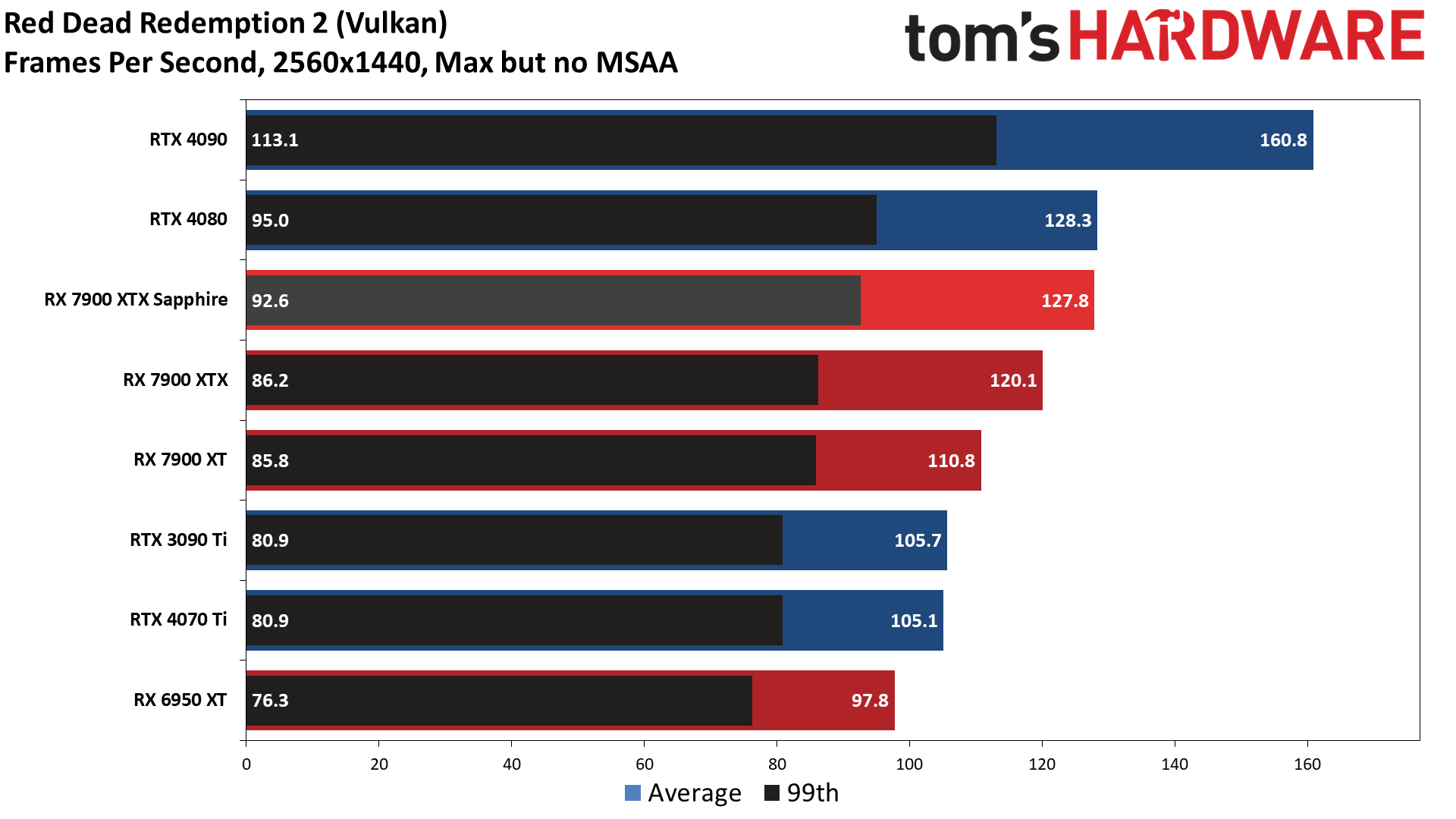
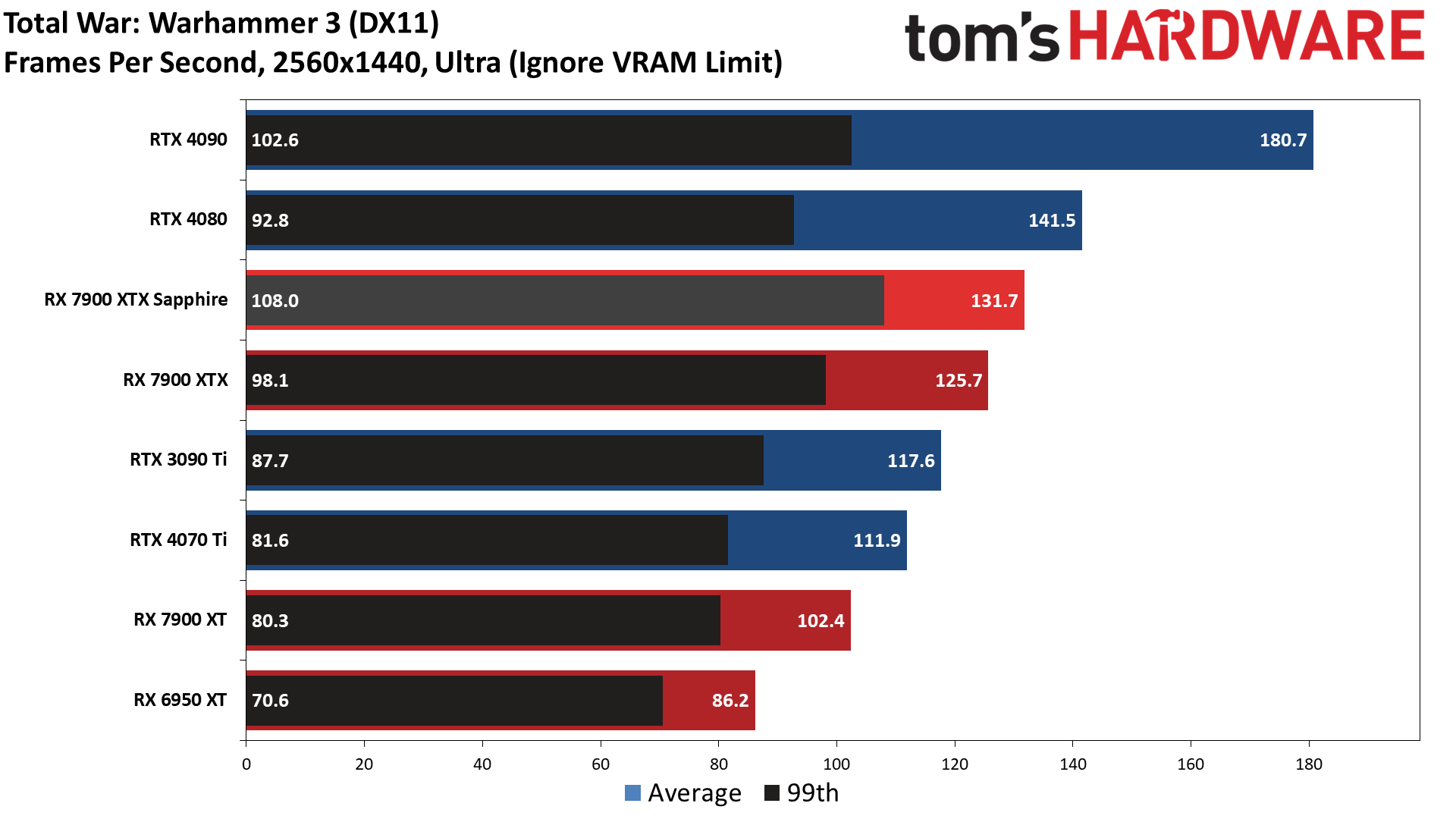
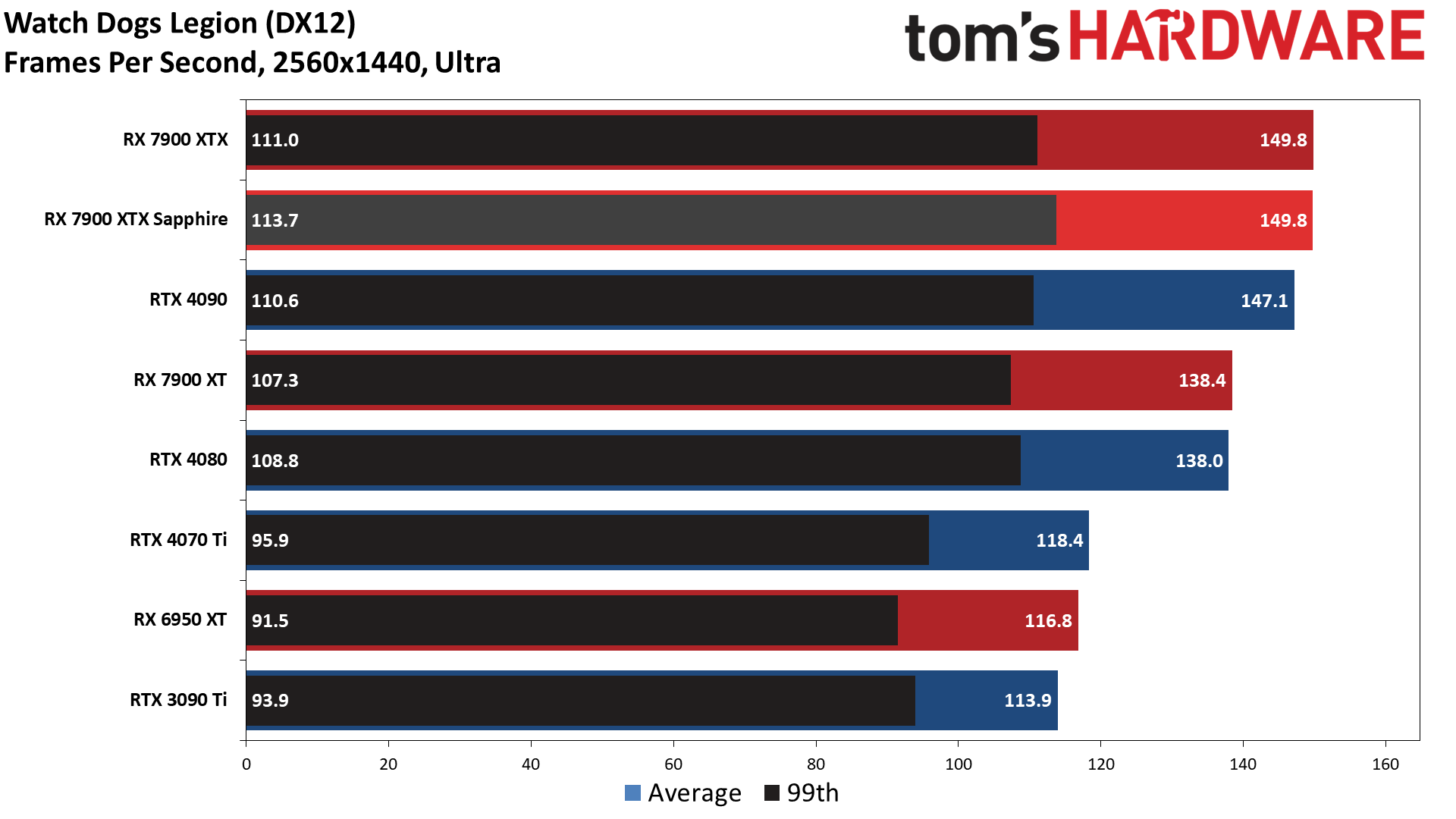
Overall performance at 1440p improves by 52% compared to 4K gaming, and quite a few games are exceeding 144 fps — great if you have one of the best gaming monitors. But while those gains are nice to see, Sapphire's relative performance lead over the reference XTX shrinks to just 1%. You definitely won't notice the performance difference while gaming.
The lead over the RTX 4080 in rasterization games also shrinks to just 4% overall, with Horizon Zero Dawn and Total War: Warhammer 3 still favoring Nvidia's GPU. In contrast, Borderlands 3, Far Cry 6, and Watch Dogs Legion continue to favor AMD by larger margins. CPU limitations are starting to come into play as well, so things like Nvidia's DLSS 3 are potentially more useful (though not the same as true rendered frames).
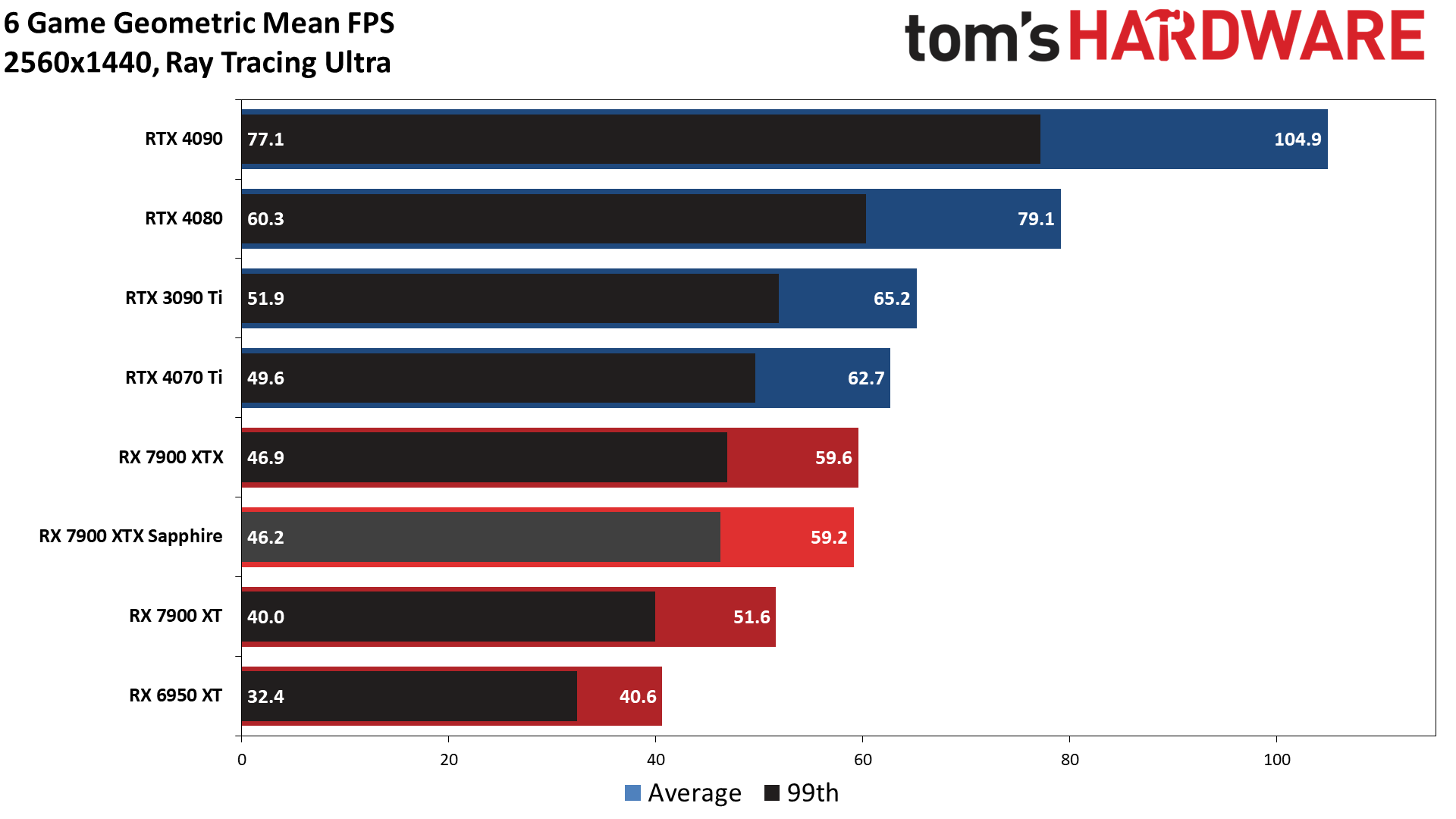
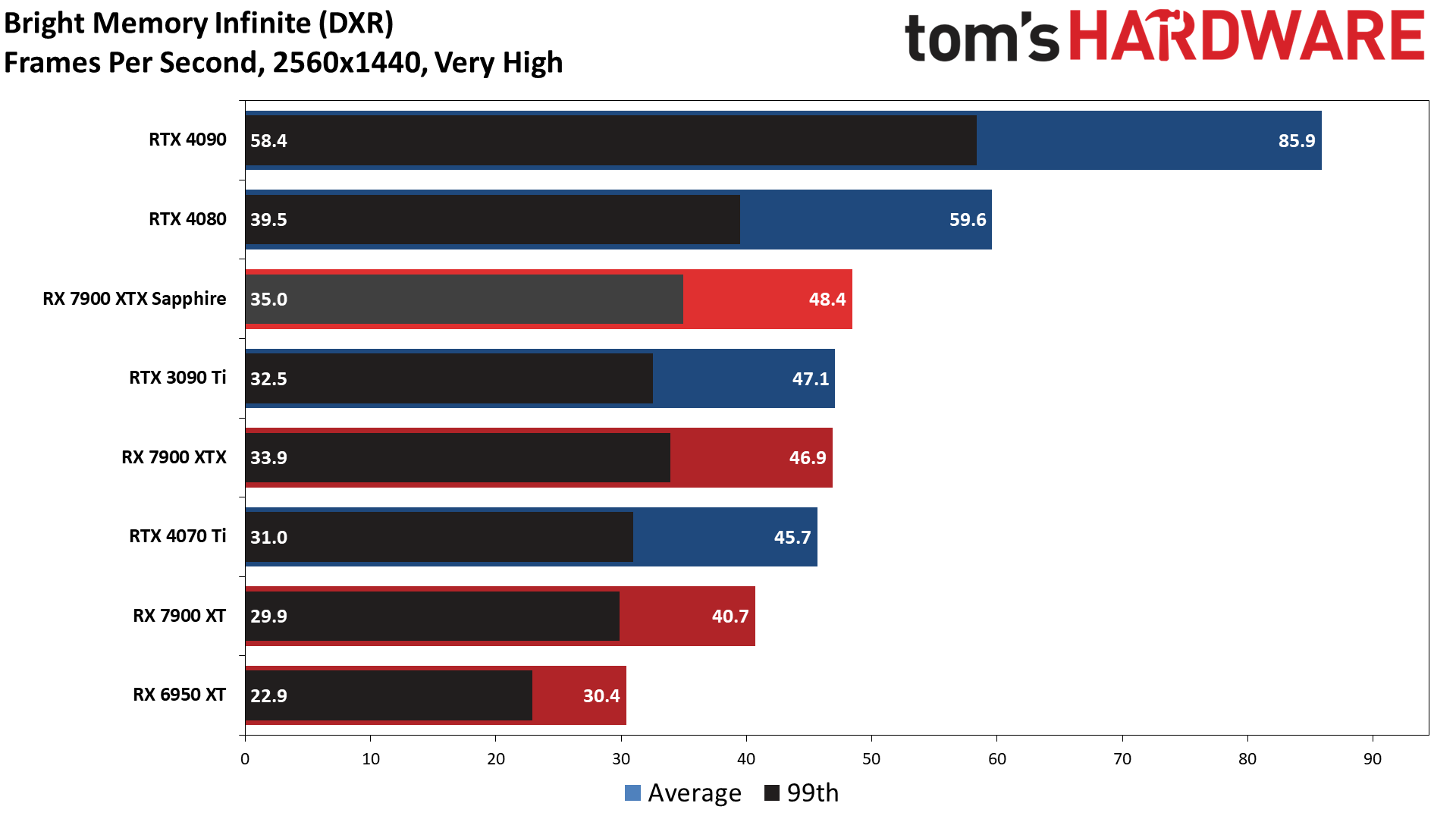
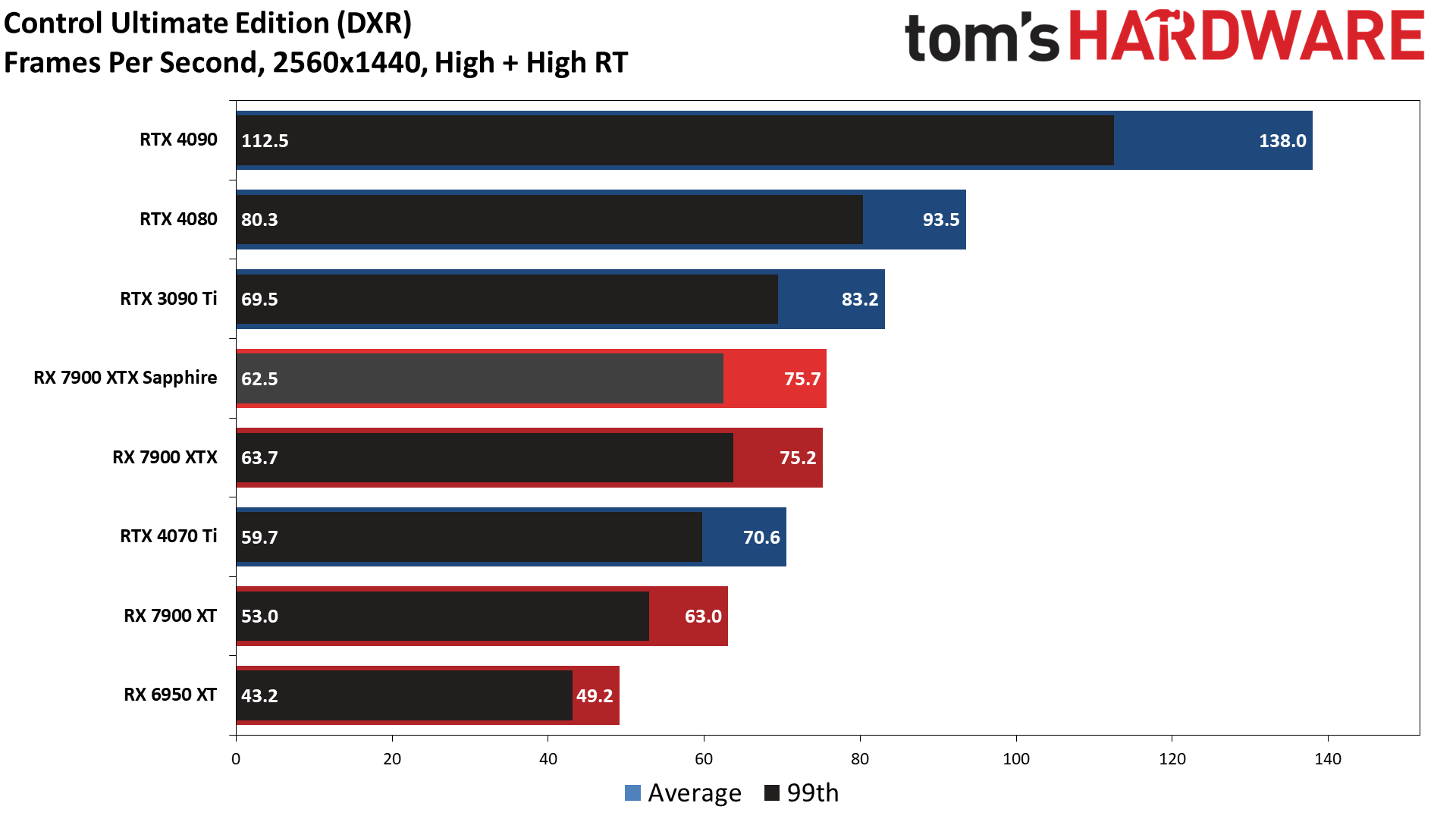
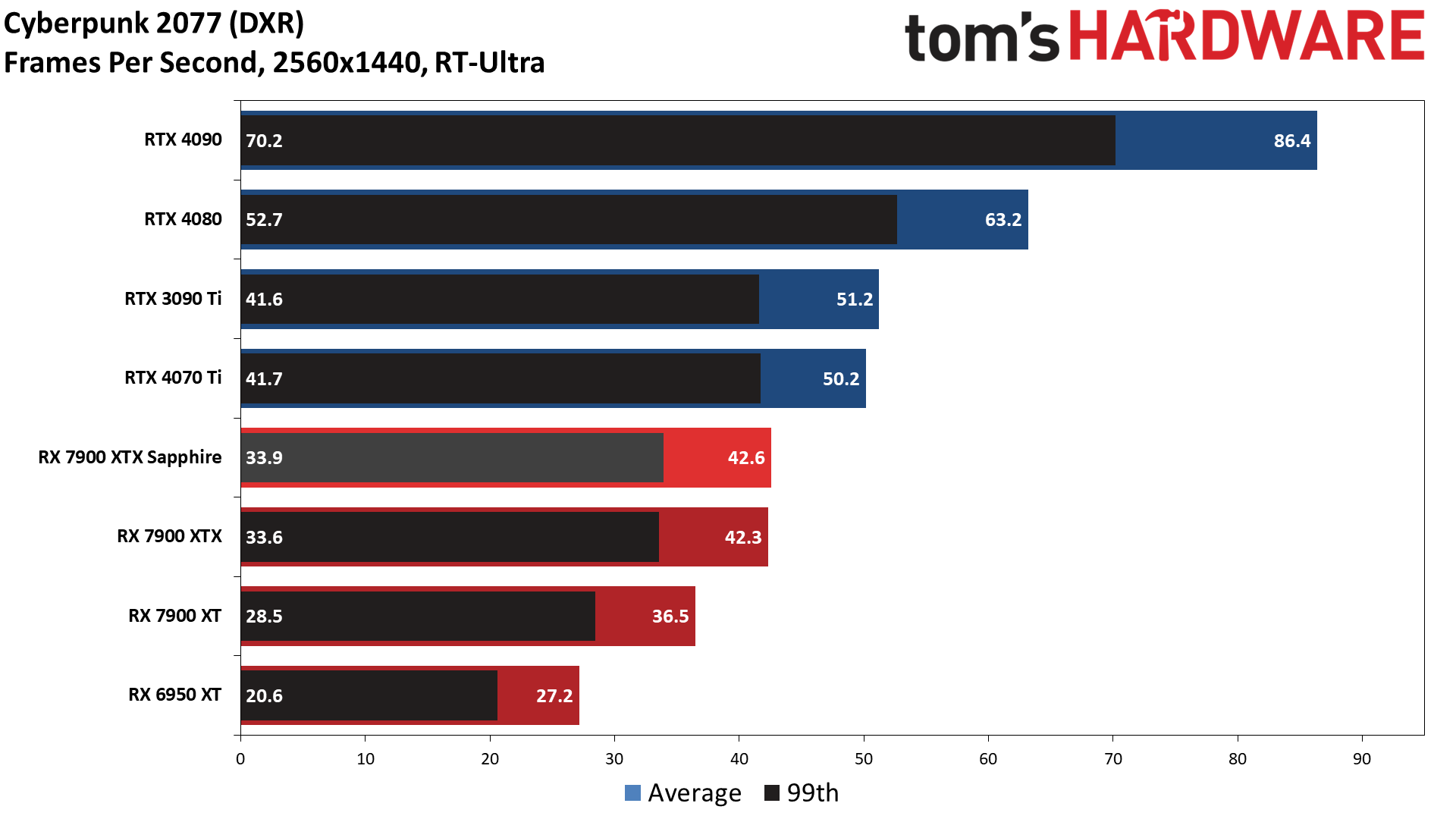
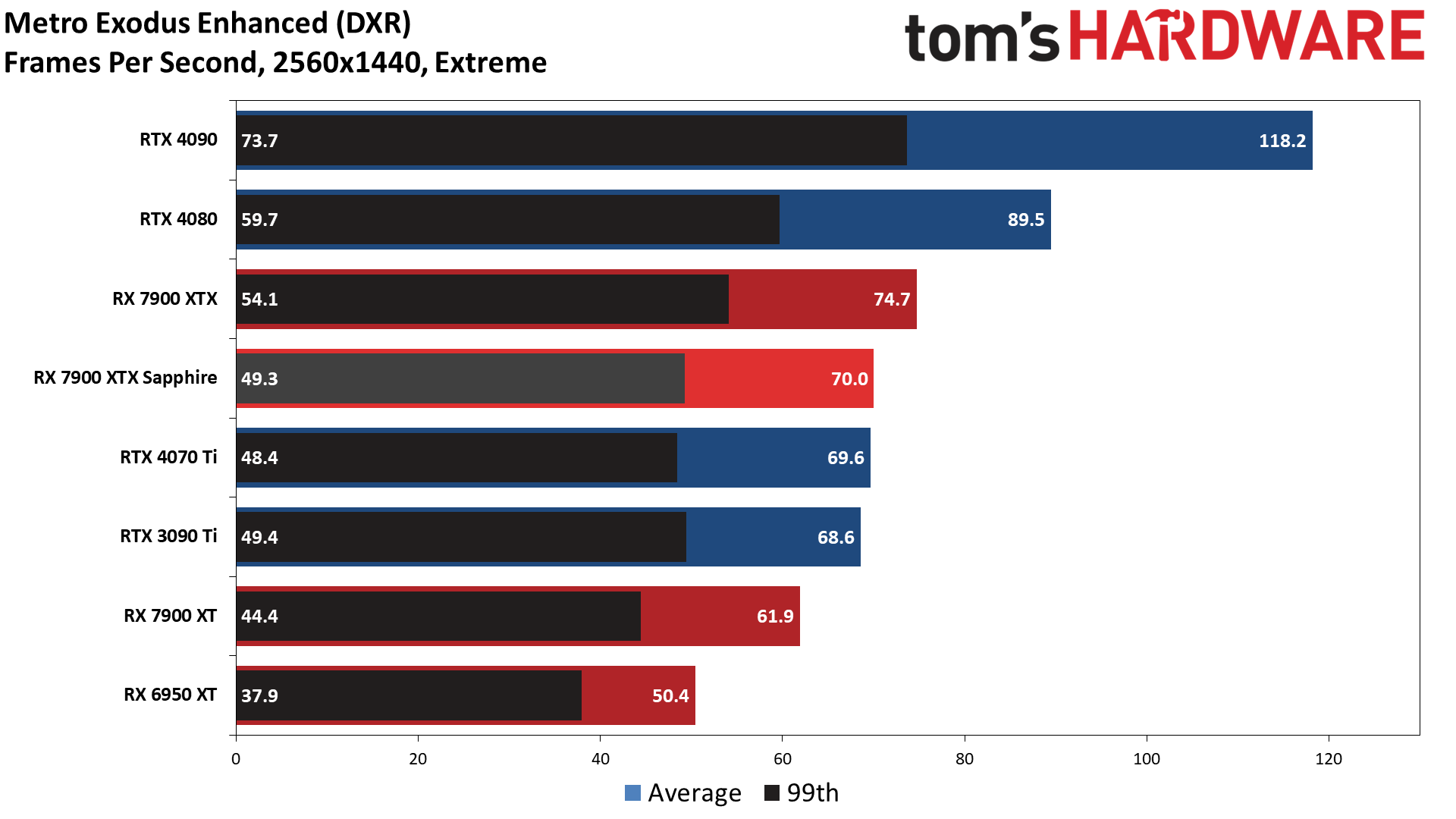
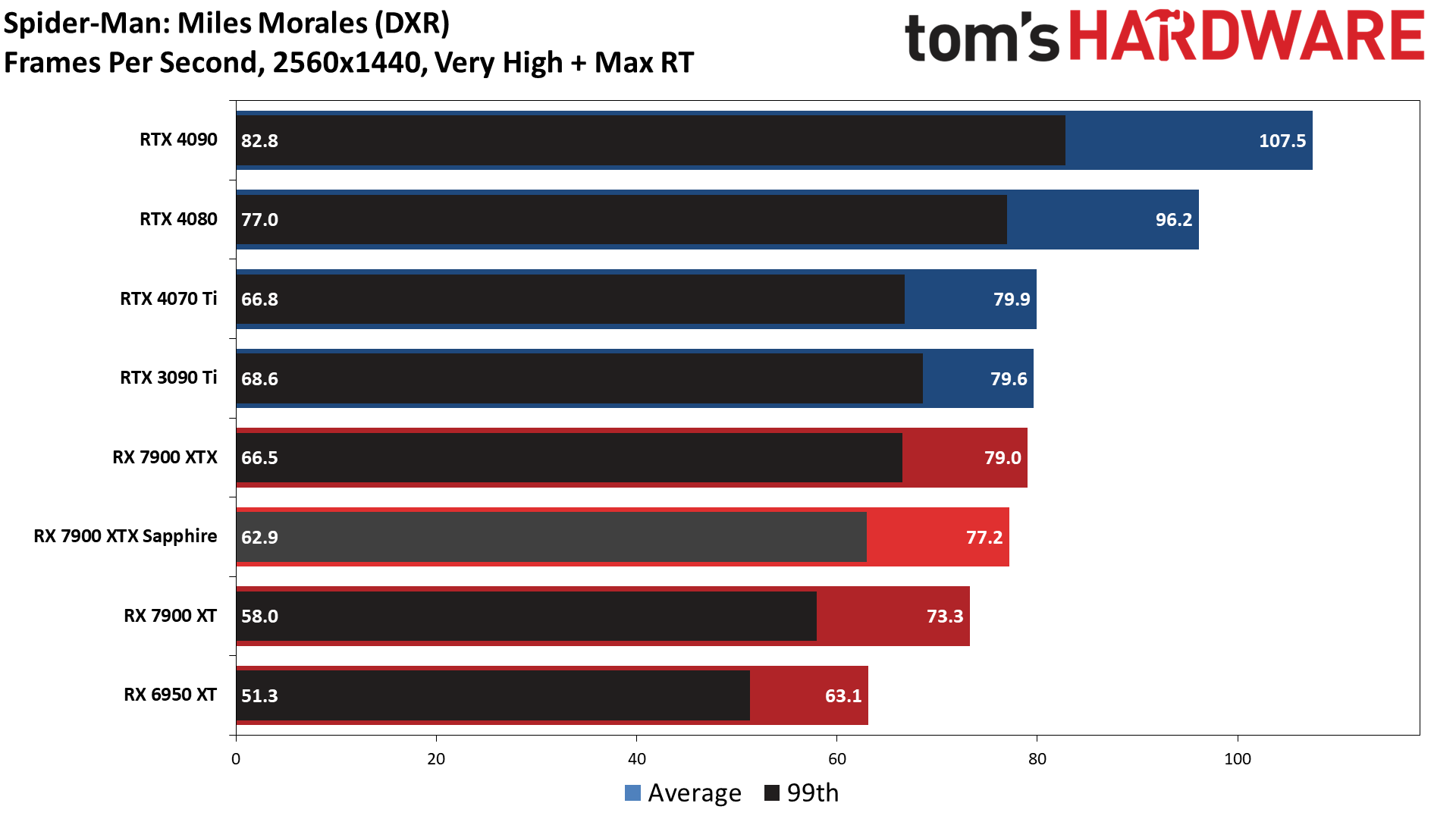
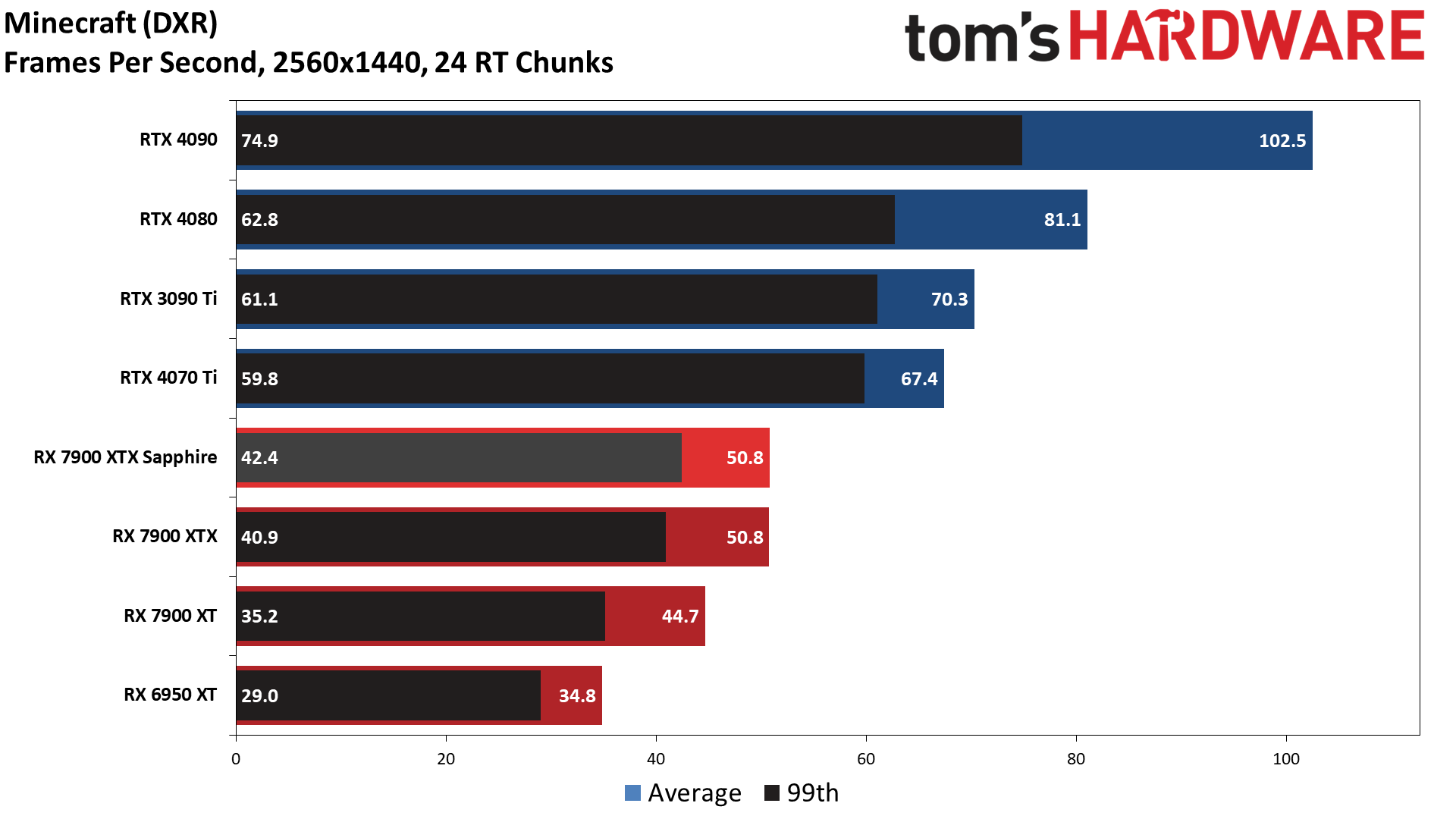
Ray tracing at 1440p doesn't show any real benefit to the Sapphire card over the reference 7900 XTX. Overall performance is down by 0.7% — tied, in other words — with Metro Exodus Enhanced registering a 6% drop while Bright Memory Infinite showed a 3% improvement.
The new RTX 4070 Ti beats AMD's best at ray tracing as well, by 6% this time, which indicates most of the games are GPU purely GPU limited. That may not be entirely true in all cases, as the CPU has to do a fair amount of work building the BVH (Bounding Volume Hierarchy) structure that gets passed to the GPU, but the RT calculations are so complex that any additional load on the CPU mostly doesn't show up in the final performance.
Two of the games (Bright Memory Infinite and Cyberpunk 2077) show a slightly larger gap between the 4070 Ti and the Sapphire card, while the gap narrows in two of the other games (Metro and Minecraft), with the remaining two being effectively tied relative to 4K performance.
Get Tom's Hardware's best news and in-depth reviews, straight to your inbox.
Current page: Sapphire RX 7900 XTX Nitro+ Vapor-X: 1440p Gaming Performance
Prev Page Sapphire RX 7900 XTX Nitro+ Vapor-X: 4K Gaming Performance Next Page Sapphire RX 7900 XTX Nitro+ Vapor-X: Power, Clocks, Temps, Fans, and Noise
Jarred Walton is a senior editor at Tom's Hardware focusing on everything GPU. He has been working as a tech journalist since 2004, writing for AnandTech, Maximum PC, and PC Gamer. From the first S3 Virge '3D decelerators' to today's GPUs, Jarred keeps up with all the latest graphics trends and is the one to ask about game performance.
-
zecoeco This one narrows the gap even more with the RTX 4090.Reply
It tells me that AMD can offer an RTX 4090 beating card with a lower price tag, but for some reason they're not interested in the beyond $1000 market. -
-Fran- Thank God Sapphire is actually cheaper in the EU than any other AMD partner XDReply
Vis a vis, this card is the same price as PowerColor and Asus models.
Such a great performer, but I don't like this design xP
Regards. -
DavidLejdar Over here, Vapor-X sells for 1,499 Euro, and 7900 XTX for 1,269 Euro (including 19% VAT in both cases). And sure is quite a price difference for such a FPS difference. And then there is the RX 7900 XT, going for less than 1,000 Euro now.Reply
For the time being, I am fine with the RX 6700 XT (OC) though. At 1440p and ultra settings, I do get at least around 70 FPS in a number of games I tried so far.
A better GPU would increase the FPS, but it won't improve the built-in graphical assets of many a game, which are ever so often designed to run on consoles, where even the PS5 comes "only" with a peak performance of 10.3 TFlops. And a PC port usually doesn't redesign all of it, which means that a RX 6700 XT with 12.4 TFlops is not easily falling behind in that regard, especially when alongside a resonable CPU and a Gen4 SSD (which the PS5 and Xbox already have, for the increased transfer rate as well for the lower latency). -
cknobman IMO Ray Tracing today is like 4k gaming was back in the 1080ti generation.Reply
Its possible but requires too many compromises and should only be used in specific cases.
We need 1-2 more generations before ray tracing will be mainstream.
So right now I could care less about ray tracing, especially at anything above 1080p. -
Elusive Ruse Good stuff Jarred, thanks. Great card but at anything above $1000 it's criminal. Not like a thousand dollars is a fair price mind you.Reply -
redgarl So AMD AIBs card are costing more than reference cards and it is a con, but Nvidia ones are as worst but it is fine....Reply
You wonder why we can take you guys seriously?
OCJYDJXDRHwView: https://youtu.be/OCJYDJXDRHw -
redgarl You cannot find a 4090 at MSRP. They orbit around 1800$. And in all honesty, the 7900XTX AIB card can OC and be between 10-15% from a 4090.Reply -
redgarl The performance of this card is impressive, however the aesthetic is horrible. Even if the XFX model perform worst, it is still provide enough headroom for a similar OC, and at least, it is one of the best looking GPU available.Reply -
Sleepy_Hollowed Damn, if this was at MSRP I'd think about it, but it's a lot.Reply
A little issue I have is that I don't know why game engine companies don't have an option to turn on Ray Tracing on cut scenes only and then none during gameplay, I'd be down for that, not that there's much difference on how games look most games anyways. -
Exploding PSU Always liked Sapphire cards, and this one is no exception. I personally buy GPUs mostly on aesthetic (after considering pricing obviously), as performance-wise GPUs of the same series from different brands probably aren't really that different between each other, especially for a casual user like me. I mean, maybe a couple degrees difference in temperature or a single-digit percent in FPS, but honestly not enough for me to feel it.Reply
I liked the last year's model better (the Nitro Pure one), albeit I'm extremely impartial to white parts and random geometric shapes. The RGB look tasteful to me, albeit I personally wouldn't set it to rainbow colours and would settle to strictly static colour, kind of elegant.
Hey, that's just my opinion. From my short experience hanging around the forums I know any mention of RGB would invite open combat on the comments so... just to be on the safe side, the "you do you" disclaimer.
If I were in the market for a new GPU, I might consider picking this one up. But nah, I'm waiting for Yeston's turn.
I made fun of the box art on Sapphire's RX 6950 XT Nitro+ Pure, and I'm happy to say the blue and black artwork on the 7900 XTX is less ugly. Not that it really matters once you unpack the card.
Full transparency, the product packaging was part of the reason why I chose my current GPU. Yeah I know, doesn't make sense and all, but hey glad you mentioned the box... Cheers
